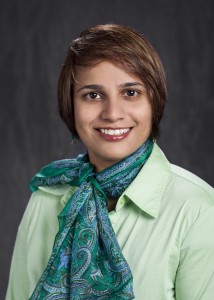About the Seminar
The research focus of my group is to investigate the effect of solvation environment on charge transport, structure and dynamics of both aqueous and non-aqueous electrolytes. An important aspect of our research is understanding the effect of secondary/non-covalent interactions on the properties of electrolytes both in the bulk and at the interface using molecular simulations. The interface is essentially a region wherein the symmetry of the bulk environment is broken and thus can include a wide range of systems from the surface of an electrode in contact with an electrolyte to an aggregate/micelle in contact with a solution. I will present three systems that my group is working on. The first is an organic electrolyte, namely a sodium salt in glyme based solvents. These are excellent electrolytes for next generation sodium based rechargeable battery technologies. The effect of salt concentration, glyme chain length and the presence of an electrode on charge transport, aggregate formation, and interfacial solvation will be explored using a combination of both ab initio molecular dynamics and classical molecular dynamics simulations, with a newly developed force-field. The second part of my talk will focus on graphene oxide (GO)-aqueous solution interfaces. This interface is critical for many exciting GO-based technologies such as water purification, catalysis, energy storage and proton exchange membranes. The question that will be discussed is whether these interfaces are highly ordered or not. Comparisons between conventional force-fields and first principles ab initio molecular simulations will be discussed and the results partially validated on recent vibrational sum frequency generation spectroscopy data. The final part of my talk will discuss the effect of charge placement on the self-assembly of polypeptoid based micelles in aqueous solutions. Peptoids are a class of peptide mimics with the side group on the nitrogen atom instead of the alpha carbon as in peptides. The side groups can be hydrophobic, neutral hydrophilic and charged hydrophilic and their judicious placement on the backbone can result in the formation of micelles. The focus in this part of the talk will be on understanding the subtle interplay between electrostatic forces, hydrophilic and hydrophobic interactions that can, in turn, govern micellar shape.



